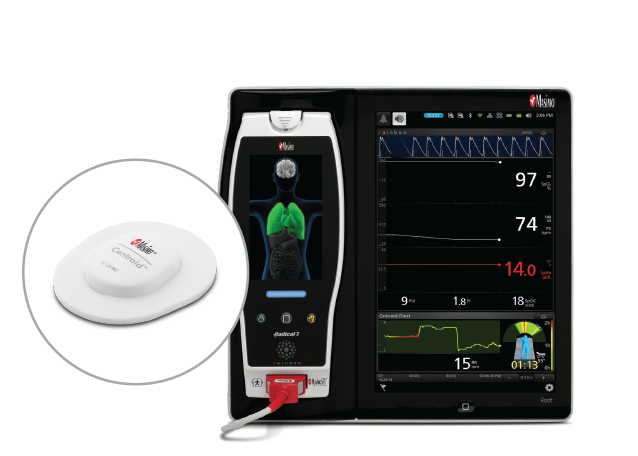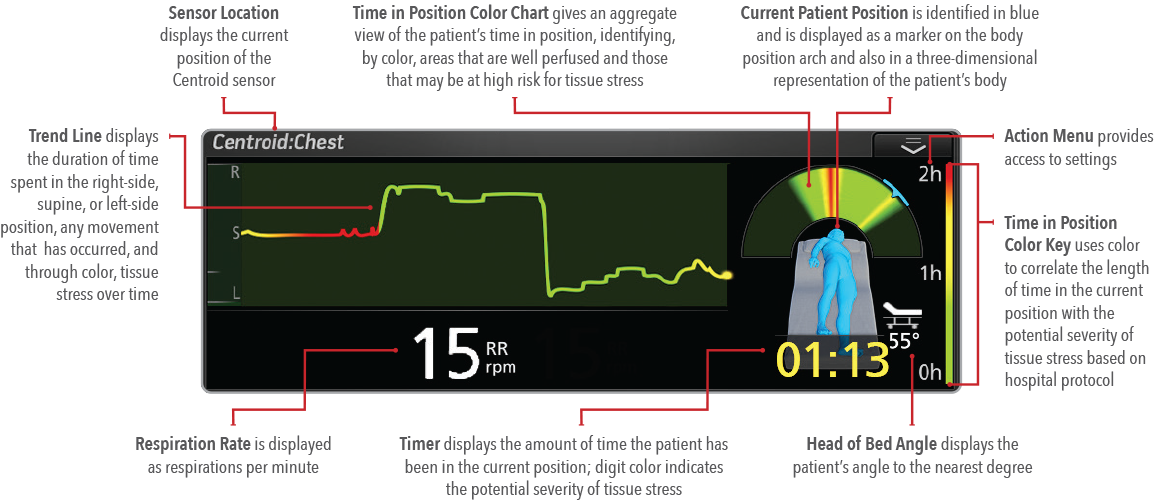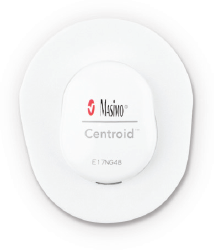Home / Centroid
Centroid

Centroid®
Patient Orientation and Activity Sensor
Centroid is a wearable, wireless patient orientation, activity, and respiration rate sensor. Centroid helps clinicians monitor patient position to avoid preventable pressure injuries and can alert clinicians to sudden movements such as fall-like events. In addition, Centroid detects chest movements to continuously provide respiration rate, assisting clinicians with additional data that may inform care decisions.
Centroid pairs with the Root® Patient Monitoring and Connectivity Platform using Bluetooth® to track a patient’s posture, orientation, and activity, providing the ability to monitor patient position and detect changes in position. The data transmitted by Centroid can be displayed in various formats on Root, giving clinicians multiple ways to assess adherence to protocols regarding tissue stress and to tailor care to the specific needs of each patient.
Helping Clinicians Monitor Patient Position to Avoid Preventable Pressure Injuries
Helping Clinicians Monitor Patient Position to Avoid Preventable Pressure Injuries
- Centroid is a wearable, wireless sensor that pairs via Bluetooth® with Root to track a patient’s posture, orientation, and activity
- Centroid provides the ability to detect changes in patient position and can alert clinicians of sudden movements such as fall-like events
- Centroid provides continuous respiratory rate (RR), providing clinicians with more data to better inform care
- Centroid is indicated for the orientation monitoring of patients who may be susceptible to pressure injuries
Assessing the Risk of Tissue Stress
Assessing the Risk of Tissue Stress
Pressure injuries affect nearly 2.5 million patients per year and approximately 60,000 of those patients die as a direct result.1 Centroid is designed to monitor patient movement and activity. The data transmitted by Centroid can be displayed in various formats on Root, giving clinicians multiple ways to quickly assess adherence to protocols regarding tissue stress and to tailor care to the specific needs of each patient.
- Centroid identifies whether a patient is lying down, standing, sitting upright, walking, or has fallen
- Alerts based on duration of static patient position can help clinicians adhere to hospital patient movement protocols
- Color-coded markers (low risk, moderate risk, and high risk) help identify the amount of time a patient has spent on each part of their body
- Centroid automatically takes into account patient self-turns.
- Customizable alarm zones may help avoid patient positions that could negatively impact recovery time
- Notification of a sudden change in position may provide early warning of potential falls

Designed with the Patient in Mind
Designed with the Patient in Mind

- Ergonomically designed with flexible, lightweight material for patient comfort
- Adhesive attachment supports continuous use during daily activities
- Made without natural rubber latex
References
- 1.
Are we ready for this change? Content last reviewed October 2014. Agency for Healthcare Research and Quality, Rockville, MD. http://www.ahrq.gov/professionals/systems/hospital/pressureulcertoolkit/putool1.html
RESOURCES
Per uso professionale. Per informazioni complete sulle prescrizioni, compresi messaggi di avvertenza, indicazioni, controindicazioni e precauzioni, leggere le istruzioni per l'uso. Attenzione: La legge federale (USA) limita la vendita del presente dispositivo a un medico o su prescrizione di un medico.
Il marchio e i logo Bluetooth® sono marchi registrati di Bluetooth® SIG e l'uso di detti marchi da parte di Masimo è sotto in licenza.
PLCO-005986/PLM-13060B-0622